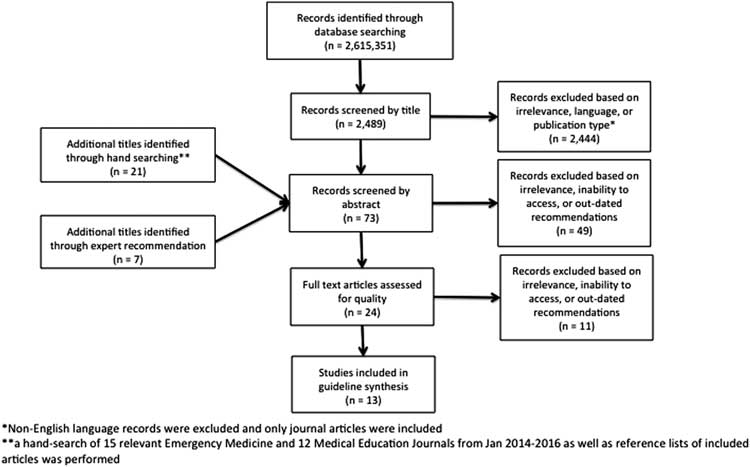INTRODUCTION
In his report for the Carnegie Foundation for the Advancement of Teaching in 1990, Ernest L. Boyer called for a new definition of scholarship, proposing a view that includes discovery, integration, application, and teaching.Reference Boyer, Moser, Ream and Braxton 1 Review articles fit into Boyer’s scholarship of integration, aiming to synthesize existing evidence and to provide a comprehensive overview of the current understanding of a specific area or focus.Reference Grady, Roise and Barr 2 They provide readers with an understanding of what research has already been done, what research has yet to be done, and where the gaps in knowledge exist within the totality of evidence on a particular topic.
Reviewing the literature for one’s own edification in medical education
For the early career scholar or for the experienced researcher entering a new field, an overview of the current literature is essential to gain understanding and context.Reference Harvey, Lang and Frank 3 Scholars benefit from completing informal topic reviews of the key concepts within a field. Additionally, because education research lends itself to many different perspectives and research techniques, junior medical education researchers may find it useful to review the literature to gain a better understanding of how various scientists use different methods to approach the same question. Reviewing the methods used in the field of medical education can be quite helpful for junior educators looking to conduct new research.Reference Boet, Sharma, Goldman and Reeves 4
Concepts in medical education span across multiple disciplines, so review search strategies must go beyond the traditional databases (i.e., PubMed) and include others such as PsychInfo, ERIC, Google Scholar, and so forth.Reference Cook and West 5 A knowledgeable mentor or an expert-recommended foundational paper can serve as a good starting point for these informal reviews. Although topic and methodological reviews are not generally accepted for publication in journals today, successful researchers use these to formulate pertinent research questions and to determine the most appropriate study design for their inquiry.
Reviewing the literature to conduct the scholarship of integration
Traditionally, the health care field has concentrated on methodologically rigorous systematic reviews concentrated on quantifying the effects of interventions or the accuracy of diagnostic tests.Reference Rowe and Alderson 6 However, many other types of knowledge synthesis methods exist, several of which are better suited to the complex qualitative data synthesis often required in medical education.Reference Cook and West 5 Non-systematic, narrative reviews integrate research to identify new insights, whereas systemic reviews summarize research on a focused topic and evaluate quality of existing bodies of evidence.Reference Harvey, Lang and Frank 3 The least rigorous review articles, commentary papers and summary documents, are usually written by experts in the field and integrate concepts and a large body of literature to provide a short overview for readers.
The heterogeneity of studies within medical education presents unique challenges, particularly with the systematic review.Reference Sherbino, van Melle and Bandiera 7 Additional challenges stem from its history of intuition-based practice and the myriad of ideological backgrounds of medical education authors.Reference Cook and West 5 Historically, these challenges have led to a body of evidence lacking rigor and interest compared to the more traditional clinical trials in medicine.
The primary objective of this publication is to perform a scoping review to collate guidance on publishing review articles in medical education. It is meant for novice educators and hopes to provide a synthesis summary of existing recommendations, but not to deliver an in-depth description of review types and specific methodologies. We hope that it will provide guidance to junior authors writing medical education reviews in emergency medicine (EM).
METHODS
Search strategy
A scoping review was undertaken to collate existing literature on how to publish a review in EM medical education. All efforts were made to adhere to Arksy and O’Malley’s framework.Reference Arskey and O’Malley 9 , Reference Colquhoun, Levac and O’Brien 10 A systematic database search was undertaken with an expert librarian using MEDLINE, Embase, ERIC, and Google Scholar. Each search was limited to English-language journal articles and assessed in parallel by two independent authors (KW and AM). Articles were excluded if they were duplicates, deemed redundant, or did not address the focused research question on how to publish a systematic review as determined by a consensus review. A senior author was available to mediate any disagreements if a consensus could not be reached, and authors erred on the side of inclusion when a disagreement ensued.
Initially, MEDLINE was searched using “and/or” combinations of variations of keywords: “medical education,” “review literature as a topic,” “EM,” and “conducting systematic reviews.” A second search of Embase was performed using “and/or” combinations of the following keywords: “medical education,” “review,” “publishing,” “writing,” and “EM.” A third search of ERIC was performed using the key phrases, “how to publish a review” and “medical education.” The differences in search terms were due to the lack of consistent terminology among databases. Search terms needed to be altered in consultation with the librarian based on taxonomy specific to each database and outputs. The first 500 titles sorted by relevance as per the ERIC search engine were reviewed for relevance and duplicates. A final search was undertaken via Google Scholar using the following three phrases: “how to publish a review in medical education,” “how to publish a review in medicine,” and “how to publish a review in EM.” The first 500 titles, as sorted by relevance as per the Google Scholar search engine, were screened.Reference Chan, Wallner and Swoboda 11 Figure 1 shows that 2,489 titles were screened initially, of which 2,444 were excluded based on irrelevance, language, or publication type.
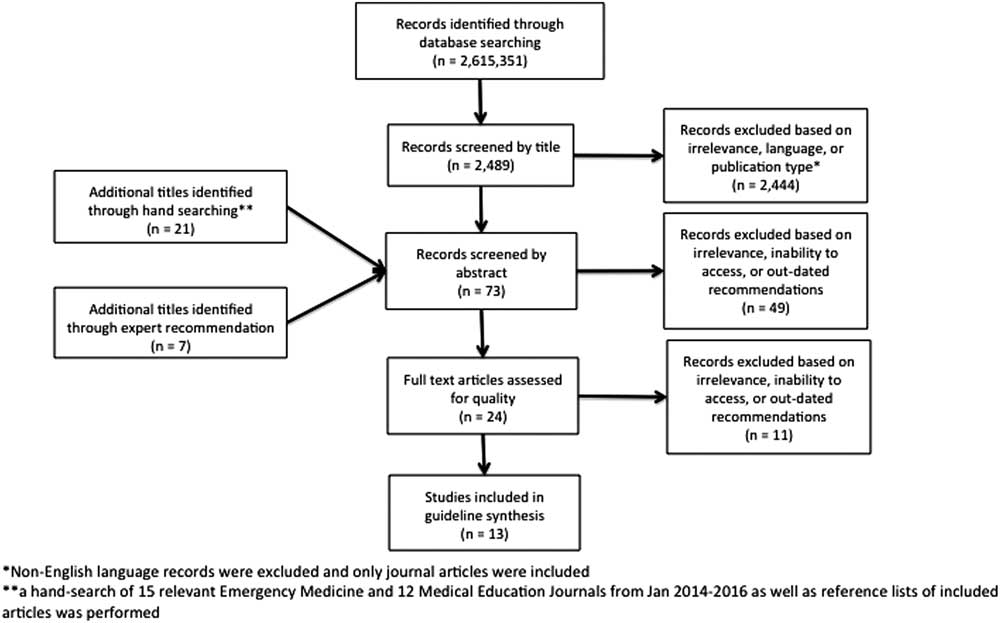
Figure 1 Flow diagram of the review process.
One reviewer (KW) also performed a supplemental hand search of 15 EM and 12 medical education journals from 2014-2016 to augment the database. These 27 journals were chosen from a list of all MEDLINE-indexed journals in EM and medical education as reviewed by a co-investigator (AH) for current activity and appropriate focus. Journals were hand-searched for author guidelines, recommended quality evaluation tools, and relevant articles pertaining to the publication of systematic reviews. Additional articles were obtained through expert consultation and ancestry searching of relevant article reference lists.
Combining the initial database search, relevant titles were obtained through hand searching and expert recommendations; a total of 73 abstracts were screened in parallel by two authors (KW and AM). From these, 24 full-text articles were read in detail and assessed for relevance. Thirteen articles were deemed appropriate and included in guideline synthesis on how to publish a review in medical education.
Analysis
Two investigators independently reviewed the final 13 selected full-text articles to extract quality markers, and a master list was created. These quality markers were analysed with a thematic analysis.Reference Frank, Mungroo, Ahmad, Wang, De Rossi and Horsley 12 , Reference Paterson, Thoma, Milne, Lin and Chan 13 Audit trails were created, and a final list was generated based on a consensus review by two primary authors (KW and AM).
RESULTS
Thematic analysis
Thirty-two quality indicators emerged along seven themes: pitfalls to avoid, preparation, introduction, methods, results, discussion, and funding (Table 1).
Table 1 Quality indicators
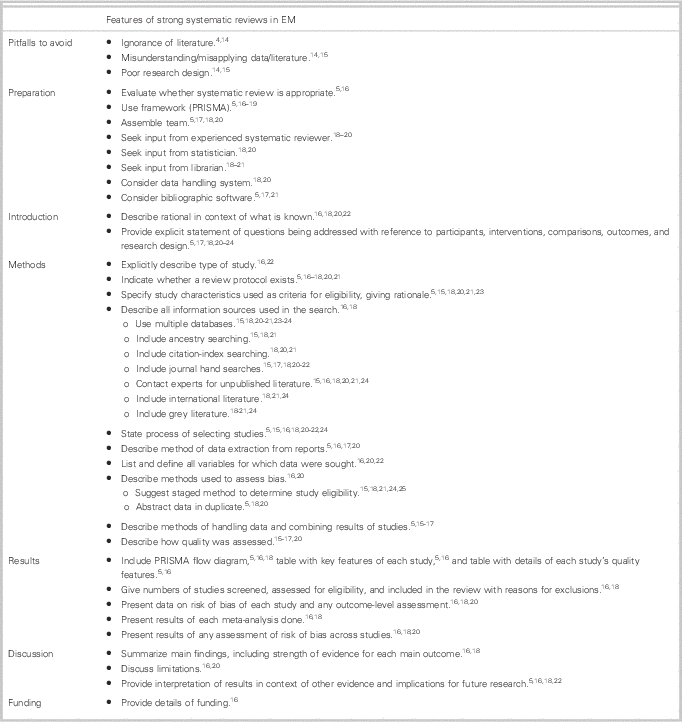
Author guidelines
Tables 2 and 3 outline specific guidelines for review articles associated with their respective journals obtained through hand searching of relevant EM and medical education journals that publish review articles.
Table 2 Medical education journals that accept review articles
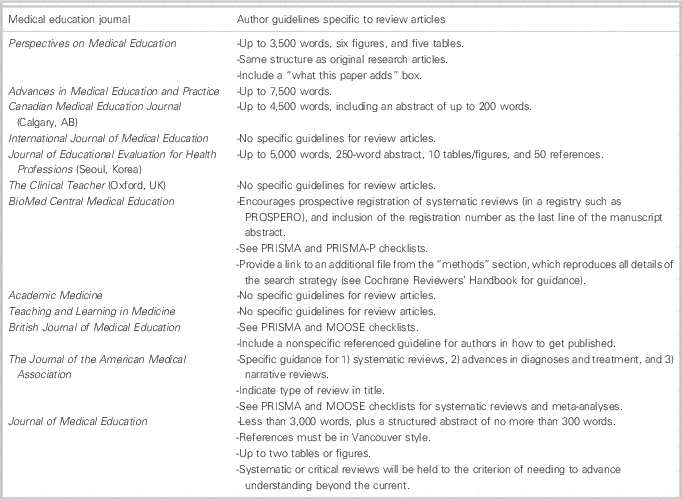
Table 3 EM journals that accept review articles
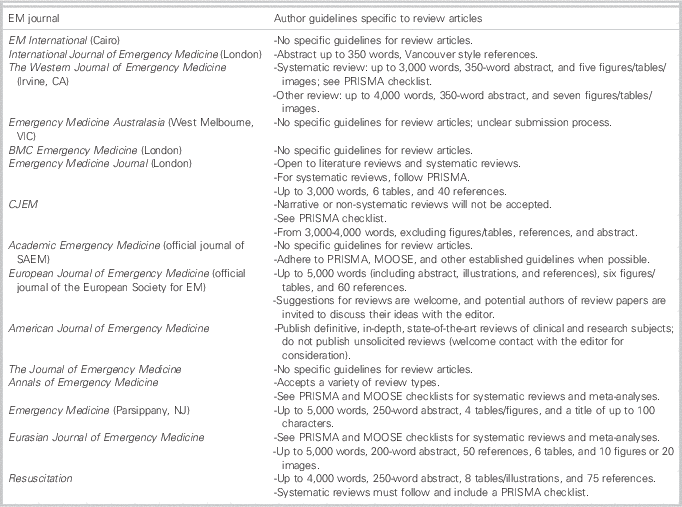
Quality evaluation tools and reporting guidelines
Seven quality evaluation tools and reporting guidelines for reviews were identified and are outlined in Table 4. These quality checklists serve as a useful resource for the implementation and quality evaluation of review research.
Table 4 Brief overview of several review types and associated resources
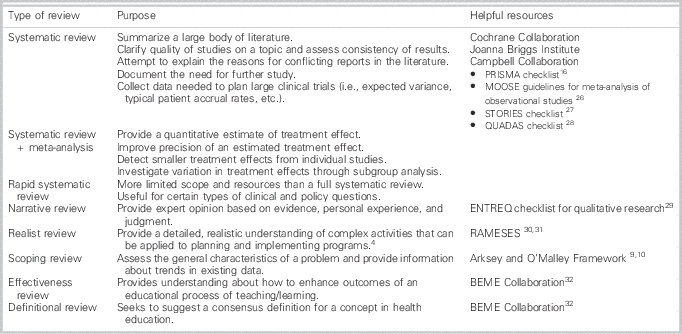
DISCUSSION
We have performed a thorough literature search to develop a list of recommendations and to collate guidelines that will assist authors in publishing reviews in EM medical education.
Our findings demonstrate that while there is an abundance of research dedicated to how to perform a review, very little research exists on how to write or publish a review. Additionally, the vast majority of papers focused on systematic reviews, leaving our paper void of recommendations for other review types. There are several explanations for this finding. Although the health care field is familiar with systematic reviews, the remaining types of review studies are less common, with a corresponding decrease in published research relating to non-systematic reviews. The lack of consistent terminology for the other types of knowledge synthesis methods further complicated our literature search. With such a heterogeneity of review studies available in medical education, a prominence of systematic reviews in the literature, in combination with the lack of consistent terminology for the other types of synthesis methods, resulted in our focus on systematic reviews.
Although the collated recommendations were broad, we hope that the quality indicators will be useful to junior researchers in assisting them to successfully publish a review in medical education. Additionally, several quality checklists and reporting guidelines were found applicable to various types of reviews. We hope these guidelines will be useful to junior scholars during the design, development, and publications stages of their scholarship.
LIMITATIONS
One limitation of the review is that very few articles answered the question of “how to get published,” thus limiting our search. Despite the assistance of two librarians and the vast database selection, our highest yield publications came from expert recommendation. One notable difficulty in studying the review literature was the lack of consistent terminology. Search terms had to be altered with the consultation of a librarian based on taxonomy specific to each database and outputs. We were left with a few very sensitive but non-specific search strategies, producing many irrelevant articles to scan through. This increases the chance that relevant articles were missed and highlights the importance of consistency in the reporting of review articles. Because most papers focused on systematic reviews, recommendations for other review types were lacking.
CONCLUSION
Review papers permit readers to quickly update their knowledge of a given topic through the synthesis of education research and support educators to use evidence-based practices. This research identified key recommendations to enable those interested in engaging in integrative scholarship by providing them with a guide to key quality markers and important checklists for improving their work in the writing and publishing phases.
Competing interests: None declared.




